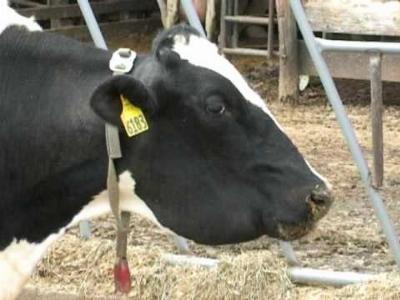Diseases of Cattle: Lumpy Jaw

Actinomycosis or lumpy jaw produces immovable hard swellings on the upper and lower jawbones of cattle, commonly at the central molar level. It is caused by an anaerobic micro-organism, Actinomyces bovis. The bacterium invades tissue through breaks in the lining of the mouth caused by eating rough forage. The tumor-like swellings develop slowly and may take several months to reach a noticeable size. Lumpy jaw may be well advanced before external signs are visible. The lumps consist of honeycombed masses of thin bone filled with yellow pus. If neglected the swellings may become very large. In advanced cases openings develop and discharge small amounts of sticky pus containing gritty yellow granules.
Difficult breathing due to involvement of the nasal bones may be the first sign. As the disease progresses, chewing becomes more difficult and painful, resulting in loss of condition. Occasionally, the soft tissues of the head and alimentary tract can be involved. Lesions in the alimentary tract give vague symptoms of indigestion, often with chronic bloat.
The most common treatments are iodine therapy or tetracyclines. Treatment is often ineffective. If the disease is detected early, it may be better to dispose of the animal while it is still in good condition. Only the head should be condemned by meat inspectors, unless the lesions have spread elsewhere in the body.
Có thể bạn quan tâm
 Diseases of Cattle: Johne's Disease
Diseases of Cattle: Johne's Disease Johne's Disease (pronounced YO-knees), or paratuberculosis, is a chronic wasting disease that causes considerable production losses in adult cattle
 Diseases of Cattle: Leptospirosis
Diseases of Cattle: Leptospirosis At least five species of leptospira, a corkscrew-like bacteria, affect cattle in the United States. The most common species affecting cattle is L. pomona.
 Diseases of Cattle: Listeriosis
Diseases of Cattle: Listeriosis Listeriosis, a disease of the central nervous system, is caused by the bacterium Listeria moncytogenes. This bacterium can live almost anywhere--in soil